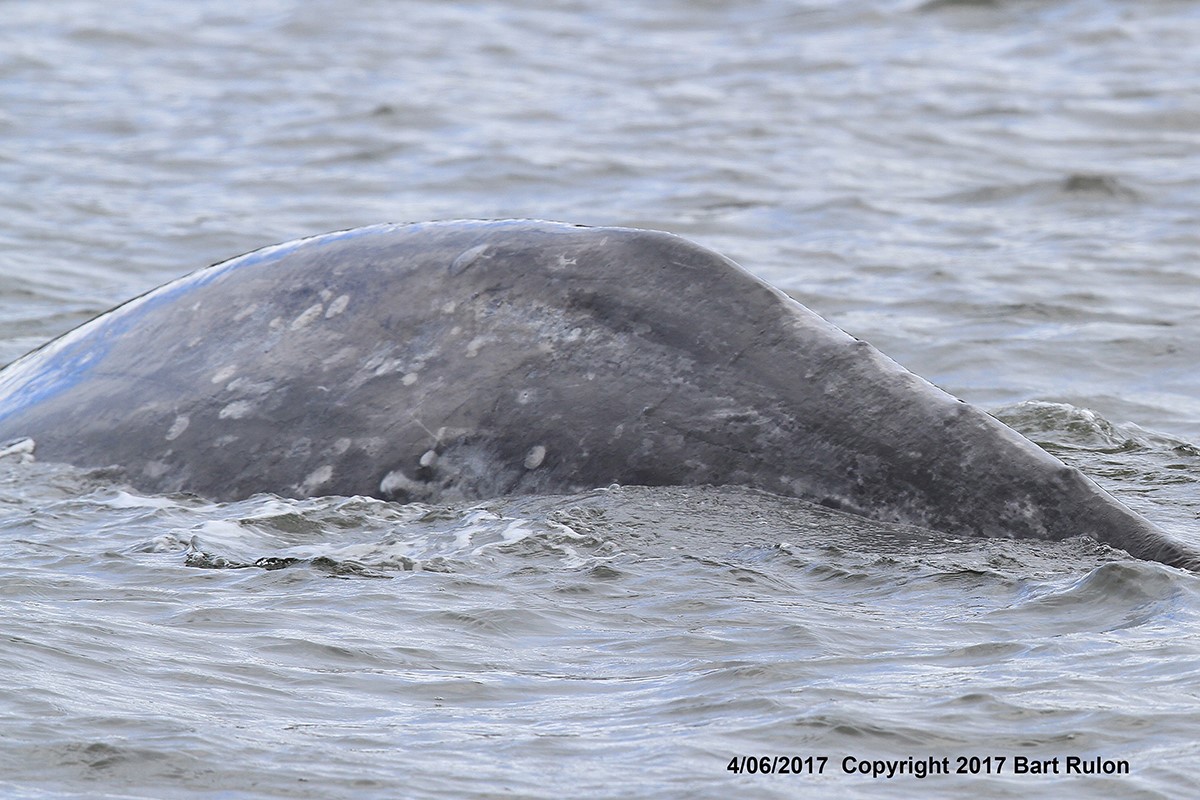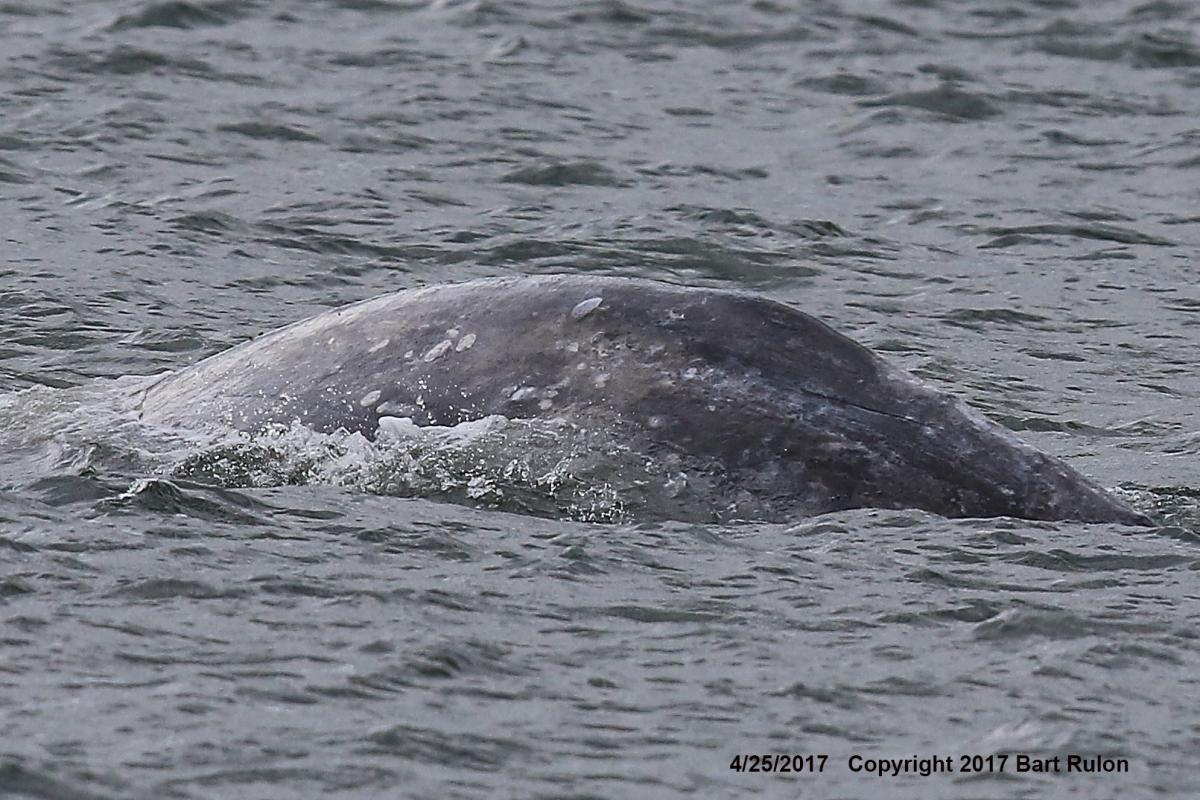For more information, contact John Calambokidis, Cascadia Research. Email: calambokidis@cascadiaresearch.org. 360-280-8349
The gray whale that was hit by the boat off Whidbey Island on 23 April 2017 has been likely confirmed by Cascadia Research as CRC-22. This whale is known as Earhart because she is a known female and is one of the very first whales identified who pioneered the high risk strategy of feeding in the intertidal zone on ghost shrimp in this region in 1990. There was initial uncertainty on who this was because there were at least three whales in the area when the whale was struck. New injuries on CRC-22’s left side seen in the days following the collision but not present prior, were used to make the determination this was the specific individual.
The cut was likely made by something sharp on the underside of the boat, but not the propeller since the injury does not have the characteristics of a typical propeller strike. At this point it is hard to judge the depth or severity of the injury or the associated blunt force impact that occurred associated with this but the limited extent of the visible injury is encouraging for now.
Cascadia began identifying gray whales in this region in 1990 when two individuals were identified (including CRC-22). This number grew in subsequent years as other whales, possibly learning from these initial individuals how to access the dense beds of ghost shrimp in the intertidal mudflats in this area. Focused work in recent years by Cascadia (with support from Washington DNR) revealed details of this high risk feeding strategy. Suction-cup attached multi-sensor video tags on whales (including CRC-22) in 2015 and 2016 revealed the whales primarily fed only during high tides where they would travel up to a mile or more onto these shallow mudflats at high tide to suck up sediment laden with ghost shrimp. Their feeding pits are visible exposed above the water line at high tide as depressions in the mud.
CRC-22 has been returning most years from March to May to the Whidbey region before apparently continuing to northern waters to feed for the rest of the summer and fall. Even though she is now an older female, we have never seen her with a calf and every 2-4 years she does not come to this region in years that we suspect she has a calf, either because she comes north later those years (and bypasses this location because it is off the migratory corridor) or perhaps because the high risk strategy of feeding in shallow intertidal waters would put a calf at high risk of stranding.
This whale will continue to be monitored in coming weeks to better assess her condition and behavior by Cascadia and other groups. This work will be coordinated with that of state and federal agencies (WDFW and NOAA) as well as other private groups and will include evaluation by veterinarians familiar with marine mammals.

Cascadia photo from 24 April 2017 of left side CRC-22 showing new cut on back as thin white line at right edge of area visible portion of body.

Cascadia photo from 18 April 2017 of left side of CRC-22 showing same area without cut. Note that area of past injury along the dorsal ridge that predates the recent collision.


Photos of left side of CRC-22 taken by Bart Rulon on 6 April (prior to collision) and 25 April 2017 (after collision), also showing the cut just below and slightly right of the dorsal hump.